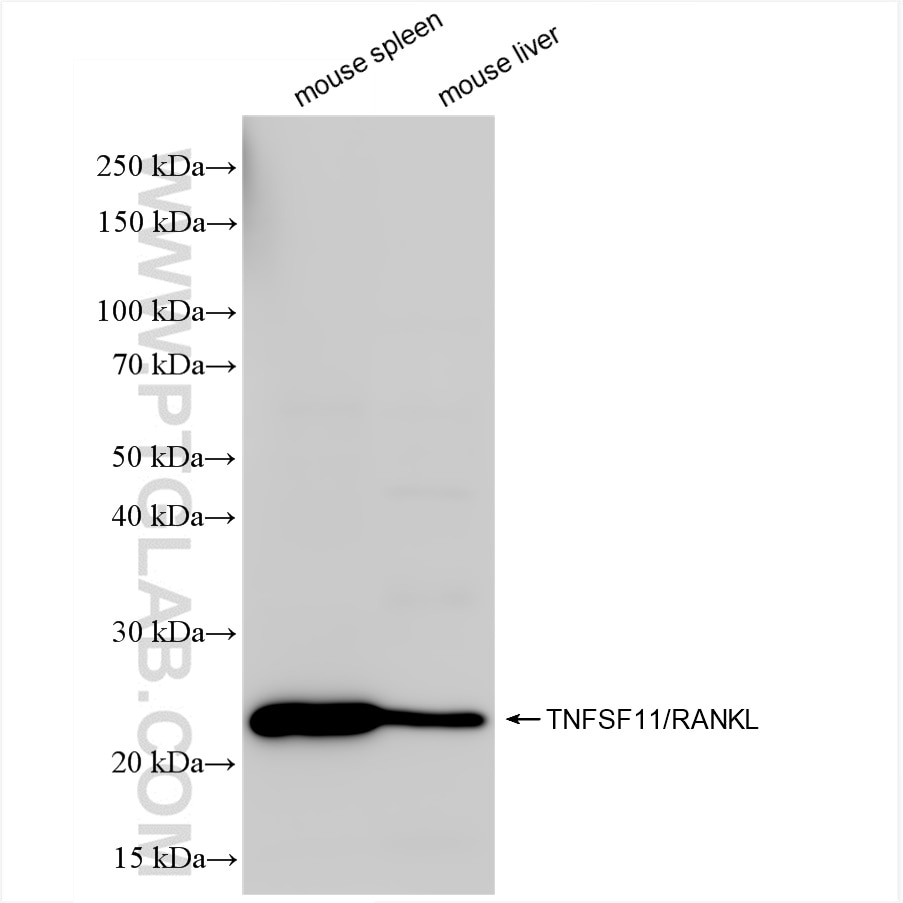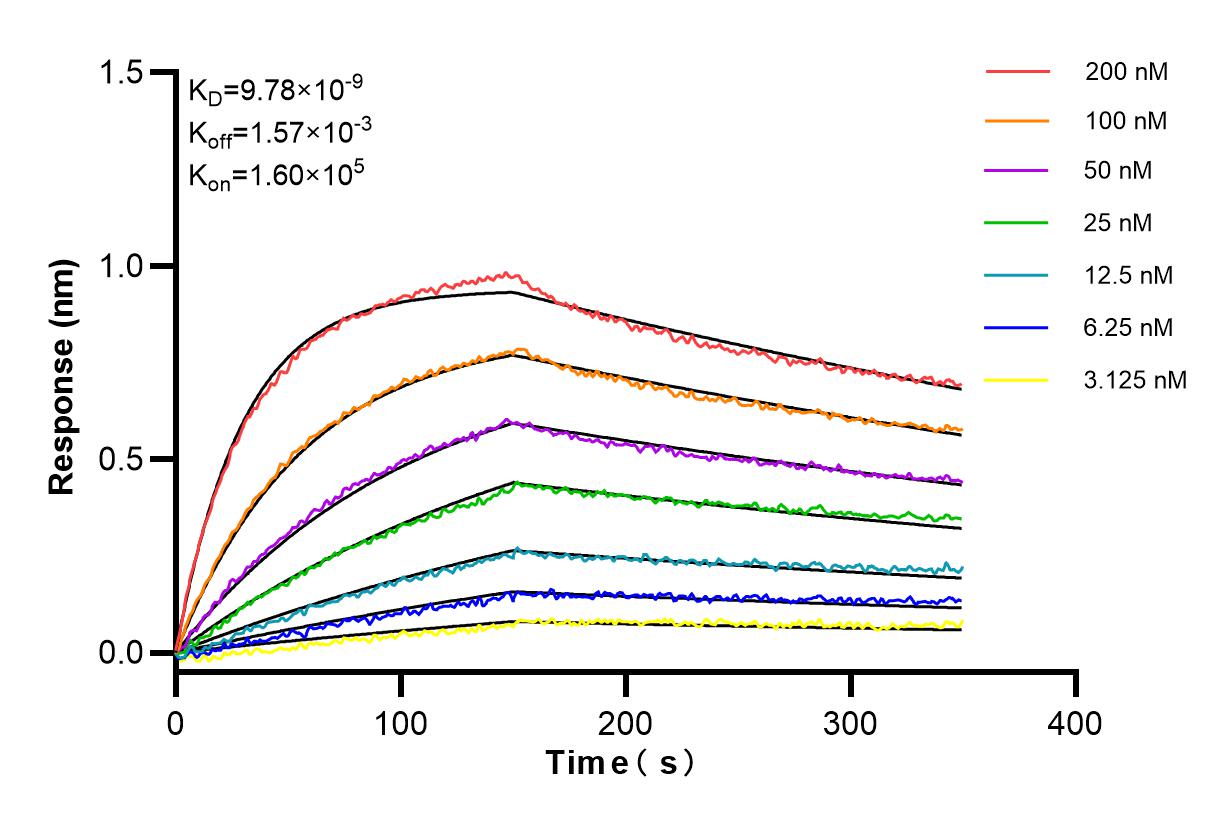Tested Applications
| Positive WB detected in | mouse spleen tissue, mouse liver tissue |
| Positive IHC detected in | mouse spleen tissue Note: suggested antigen retrieval with TE buffer pH 9.0; (*) Alternatively, antigen retrieval may be performed with citrate buffer pH 6.0 |
Recommended dilution
| Application | Dilution |
|---|---|
| Western Blot (WB) | WB : 1:1000-1:4000 |
| Immunohistochemistry (IHC) | IHC : 1:400-1:1600 |
| It is recommended that this reagent should be titrated in each testing system to obtain optimal results. | |
| Sample-dependent, Check data in validation data gallery. | |
Product Information
84431-5-RR targets TNFSF11/RANKL in WB, IHC, ELISA applications and shows reactivity with mouse samples.
| Tested Reactivity | mouse |
| Host / Isotype | Rabbit / IgG |
| Class | Recombinant |
| Type | Antibody |
| Immunogen |
CatNo: Eg1956 Product name: Recombinant Mouse TNFSF11/RANKL protein (rFc Tag)(HPLC verified) Source: mammalian cells-derived, pHZ-KIsec-N-rFc Tag: N-rFc Domain: 72-316 aa of NM_011613.3 Sequence: RAQMDPNRISEDSTHCFYRILRLHENADLQDSTLESEDTLPDSCRRMKQAFQGAVQKELQHIVGPQRFSGAPAMMEGSWLDVAQRGKPEAQPFAHLTINAASIPSGSHKVTLSSWYHDRGWAKISNMTLSNGKLRVNQDGFYYLYANICFRHHETSGSVPTDYLQLMVYVVKTSIKIPSSHNLMKGGSTKNWSGNSEFHFYSINVGGFFKLRAGEEISIQVSNPSLLDPDQDATYFGAFKVQDID Predict reactive species |
| Full Name | tumor necrosis factor (ligand) superfamily, member 11 |
| Calculated Molecular Weight | 35KD |
| Observed Molecular Weight | 22 kDa |
| GenBank Accession Number | NM_011613.3 |
| Gene Symbol | Tnfsf11 |
| Gene ID (NCBI) | 21943 |
| RRID | AB_3671958 |
| Conjugate | Unconjugated |
| Form | Liquid |
| Purification Method | Protein A purfication |
| UNIPROT ID | O35235 |
| Storage Buffer | PBS with 0.02% sodium azide and 50% glycerol, pH 7.3. |
| Storage Conditions | Store at -20°C. Stable for one year after shipment. Aliquoting is unnecessary for -20oC storage. 20ul sizes contain 0.1% BSA. |
Background Information
TNFSF11, known as Tumor Necrosis Factor Superfamily Member 11, also known as RANKL (Receptor Activator of Nuclear Factor-κB Ligand), TRANCE, etc., is a member of the Tumor Necrosis Factor (TNF) superfamily.RANKL is a type II homotrimeric transmembrane protein located primarily at the plasma membrane. RANKL is a type II homotrimeric transmembrane protein located mainly at the plasma membrane, and in addition to the membrane-bound form (mRNAKL), it can also be cleaved by proteolytic cleavage of the cell membrane to produce the soluble form (sRANKL). The membrane-bound form of RANKL is the main form involved in triggering the RANKL/RANK signaling pathway and mediating osteoclastogenesis. Current studies have shown that TNFSF11 acts primarily in the immune and skeletal systems and has been implicated in the pathogenesis of degenerative bone diseases, carcinogenesis, and asthma.
Protocols
| Product Specific Protocols | |
|---|---|
| IHC protocol for TNFSF11/RANKL antibody 84431-5-RR | Download protocol |
| WB protocol for TNFSF11/RANKL antibody 84431-5-RR | Download protocol |
| Standard Protocols | |
|---|---|
| Click here to view our Standard Protocols |








